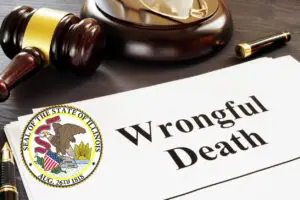Premises liability lawsuits are among the most common types of personal injury lawsuits in the United States, but they often go by a different, more descriptive name: slip-and-fall lawsuits. As that name suggests, plaintiffs in slip-and-fall cases have been injured by slipping and falling while on the defendant’s property.
For example, many slip-and-fall cases involve supermarkets or other public locations where some liquid has been spilled on the floor. The plaintiff unwittingly steps in the liquid, falls, and is injured.
In this post, we provide a basic overview of premises liability law, including what the plaintiff must prove and what defenses the defendant might raise.
Slip-and-Fall Basics: The Elements of Premises Liability
To prevail on a slip-and-fall claim, the plaintiff must prove all of the following:
- There was a condition on the defendant’s property that presented an unreasonable risk of harm to people on the property.
- The defendant knew or should have known of the condition and the risk it posed.
- The defendant could reasonably expect that people on the property would not discover or realize the danger or would fail to protect themselves against it.
- The defendant was wrongful or negligent.
- The plaintiff was injured.
- The defendant’s negligence was a proximate cause of the plaintiff’s injury.
However, there are some exceptions to the above elements. First, a property owner has no obligation to remove natural accumulations of snow, ice, or melt water. If a slip-and-fall is caused by such conditions, the plaintiff must go further to prove some other problem with the property—like a sloped surface or improper building design that caused an “unnatural” accumulation.
Second, if the plaintiff can show that the dangerous condition arose from the defendant’s act or as part of the defendant’s business, then the notice requirement in the second element need not be proven.
What Defenses Can the Defendant Raise?
The defendant in a premises liability case can raise several defenses to defeat the plaintiff’s claim, including:
- The danger was open and obvious. If the dangerous condition on the defendant’s property was “open and obvious,” then the defendant had no duty to warn the plaintiff of it. However, there are important exceptions to this rule, which depend on the facts of each particular face.
- The plaintiff was a trespasser. Property owners owe no duty to trespassers regarding their property unless the owner knows or should know of the trespasser’s presence on the property. But then, the only duty owed is a duty not to injure the trespasser willfully or wantonly.
- The plaintiff released the defendant from liability. Many businesses that offer recreational activities to their customers require customers to sign waivers before they’re allowed on the business’ property. Those waivers release the business from liability for injuries to the plaintiff.
- The defendant is immune under other law. The Illinois Recreational Use of Land and Water Areas Act grants broad immunity to owners of property that is put to specific uses, such as hunting or conservation.
What Should You Do if You’re Injured on Another’s Property?
If you’ve been injured while on another person’s property, call the experienced lawyers at Costa Ivone, LLC, today for a free initial consultation. They can help you understand your rights under Illinois law and investigate your claim to build the strongest case possible.




